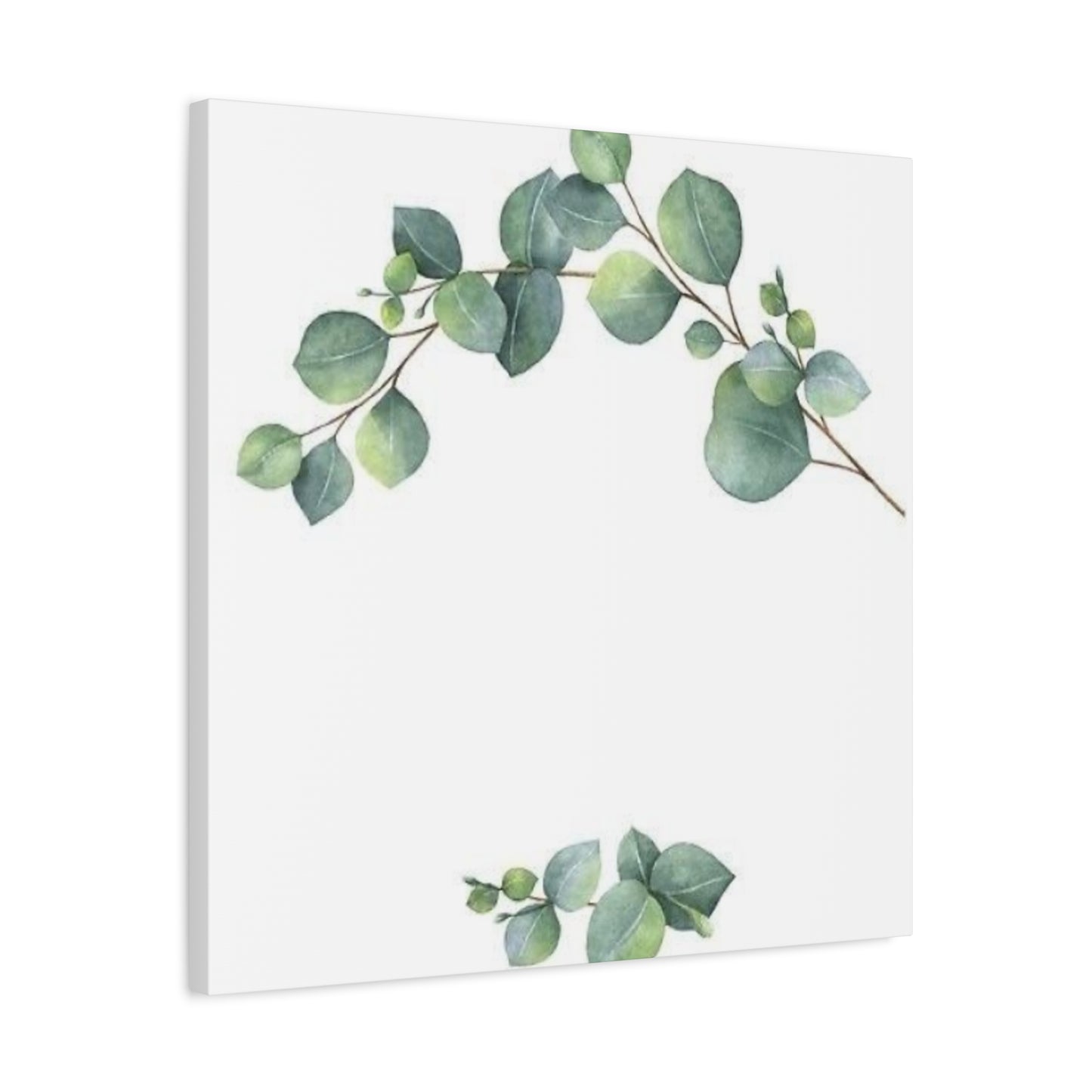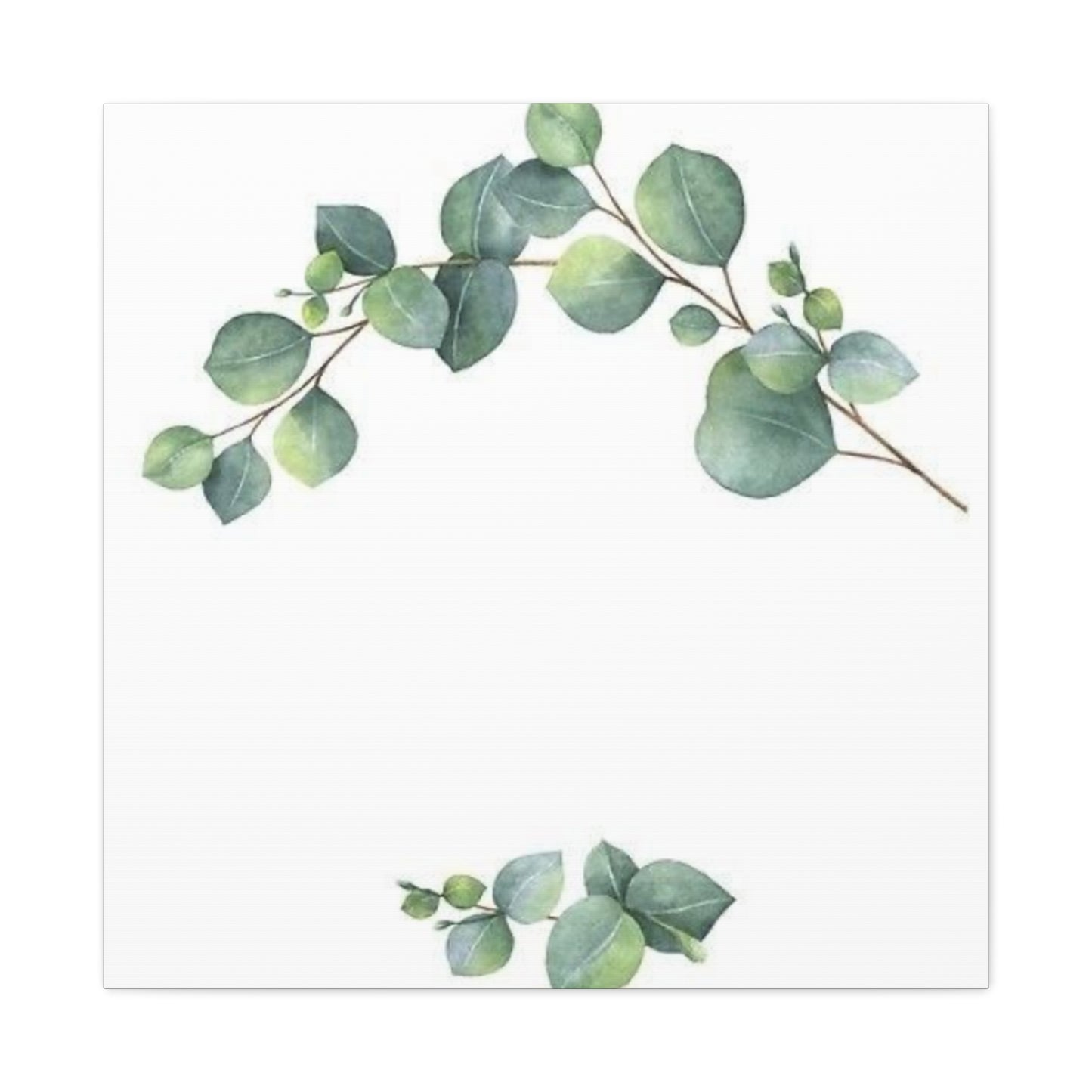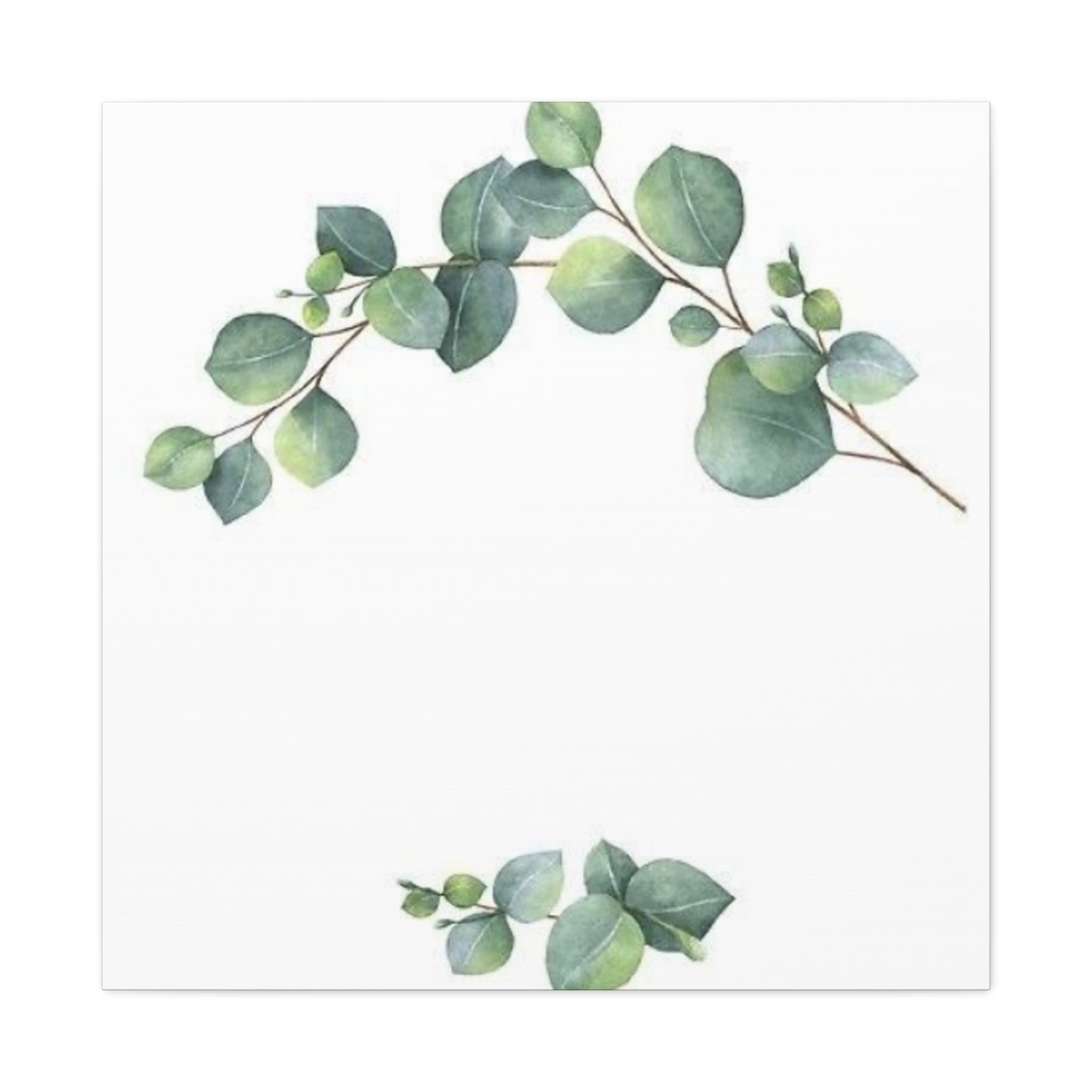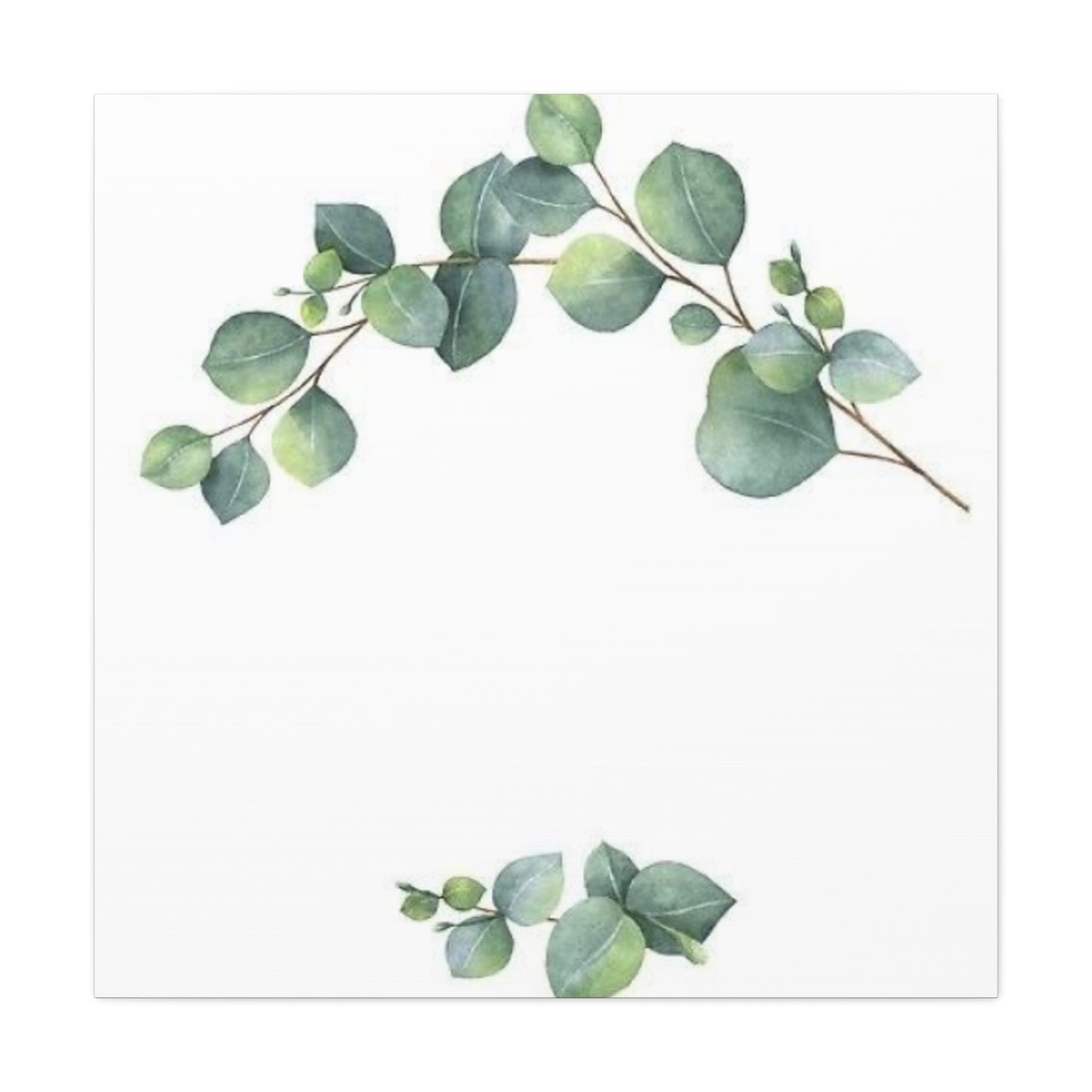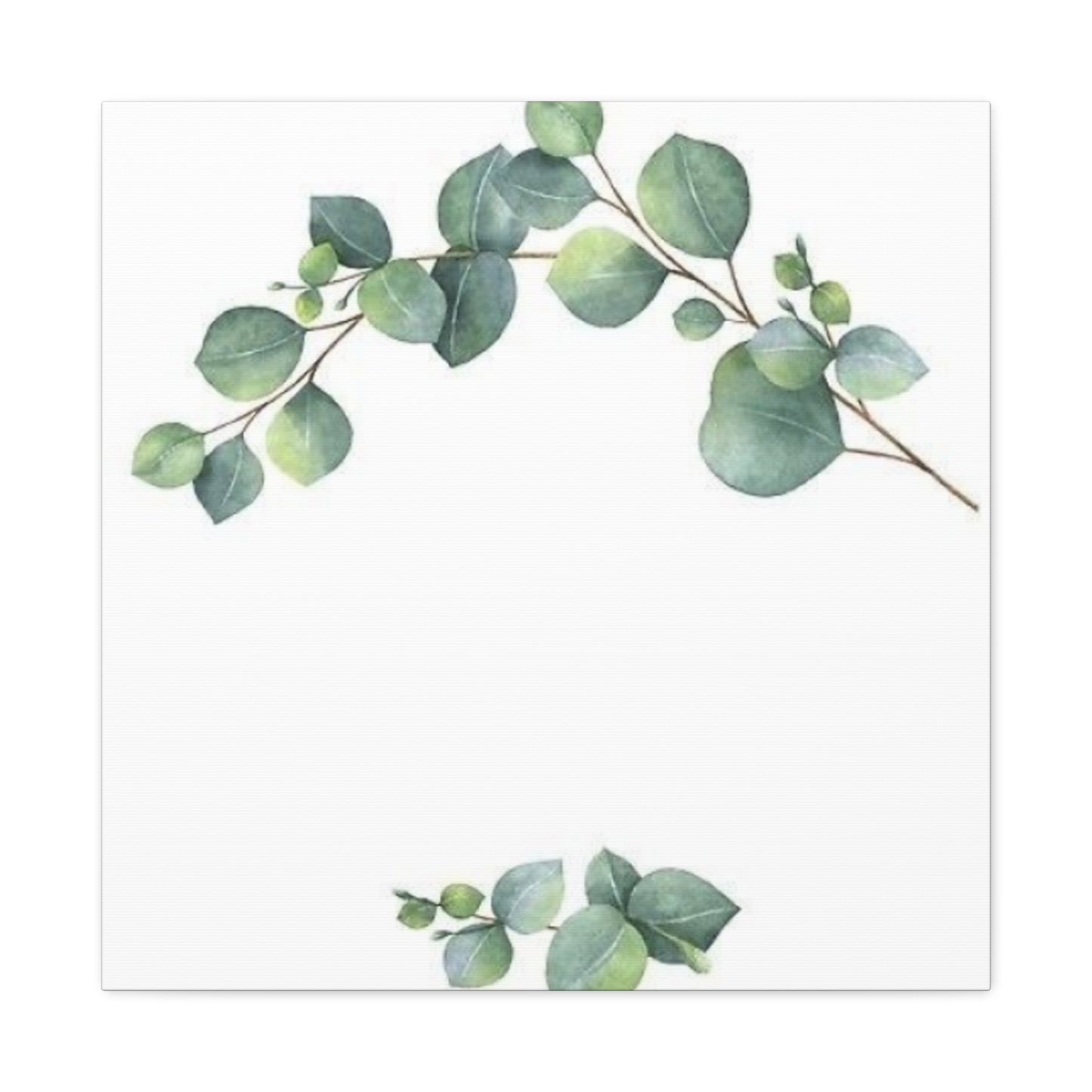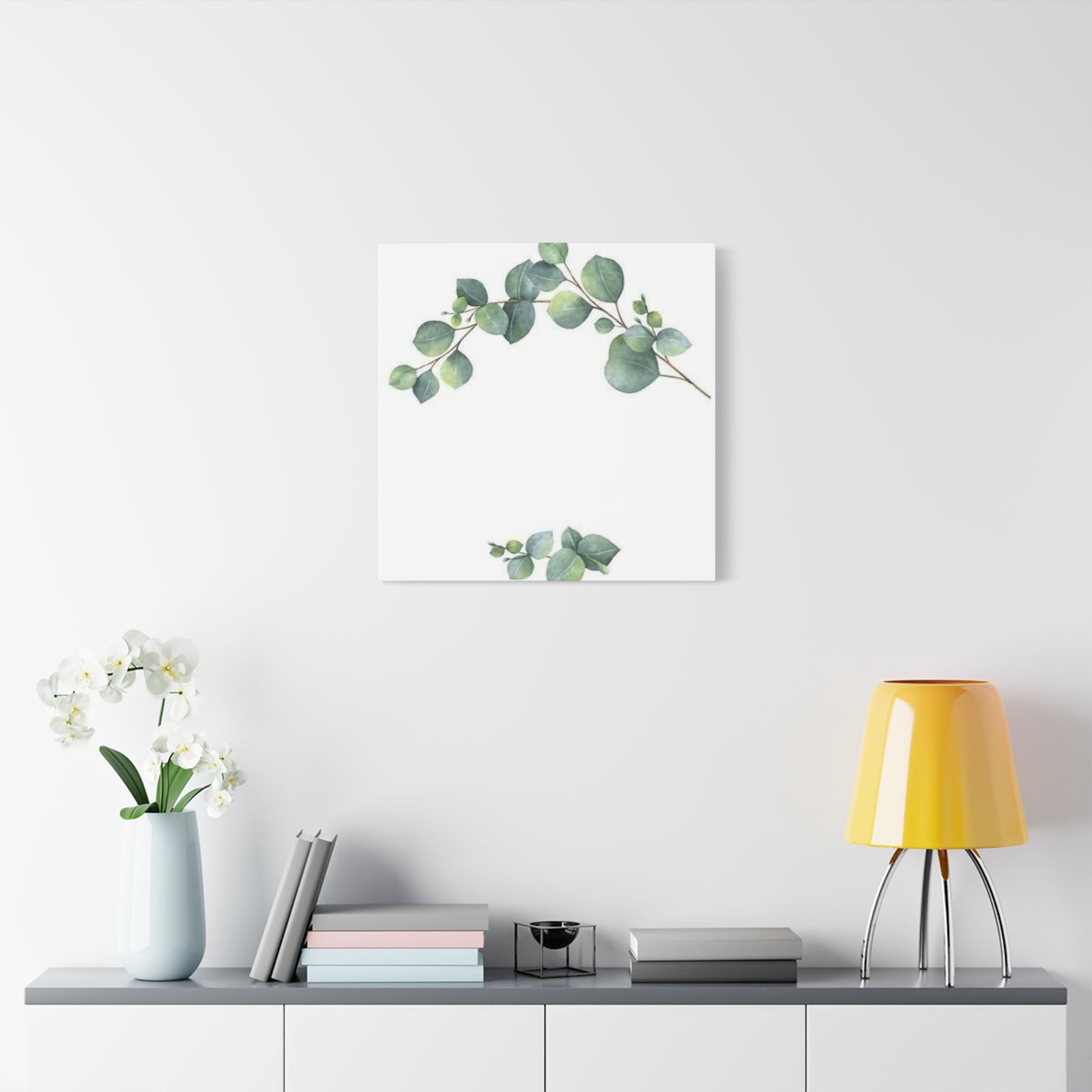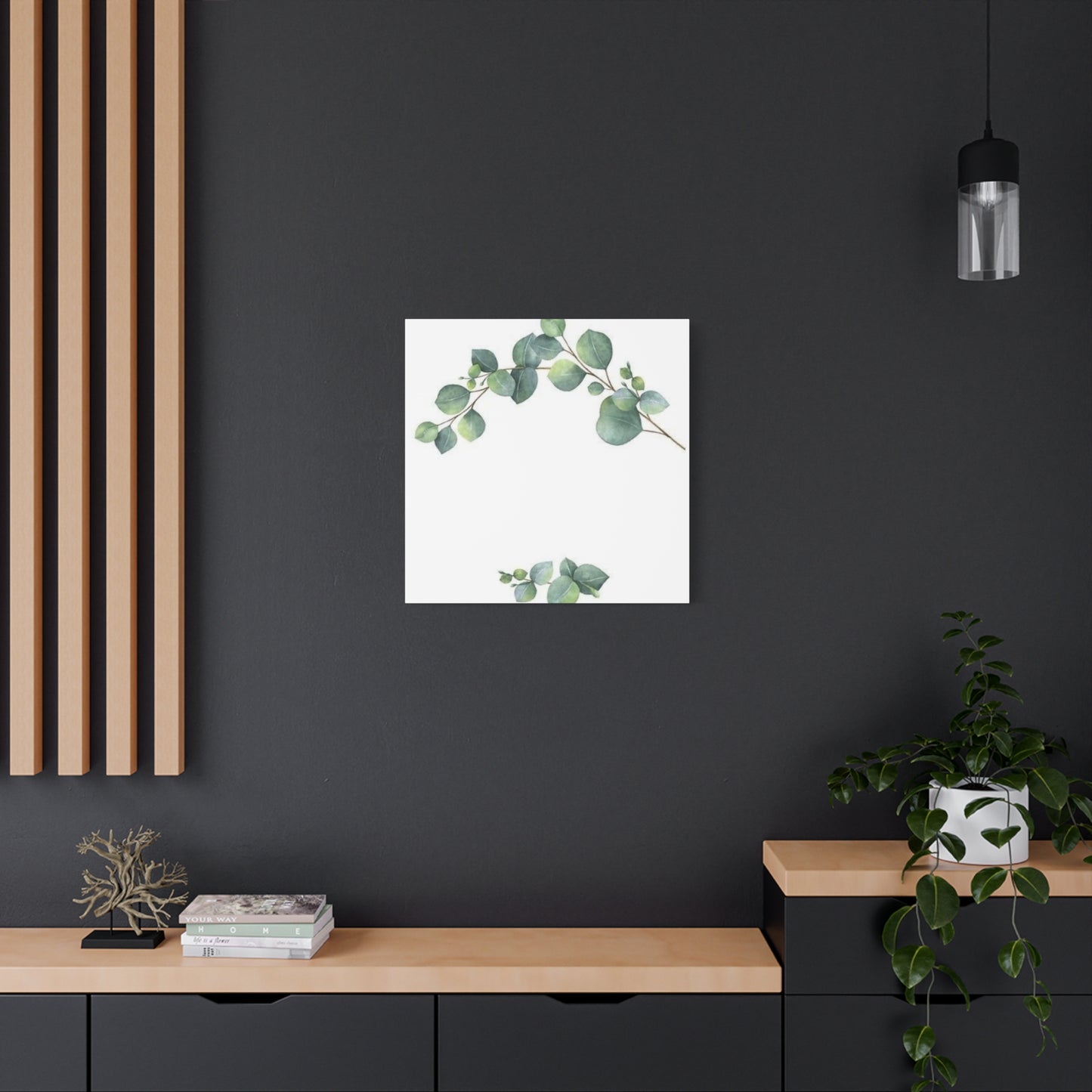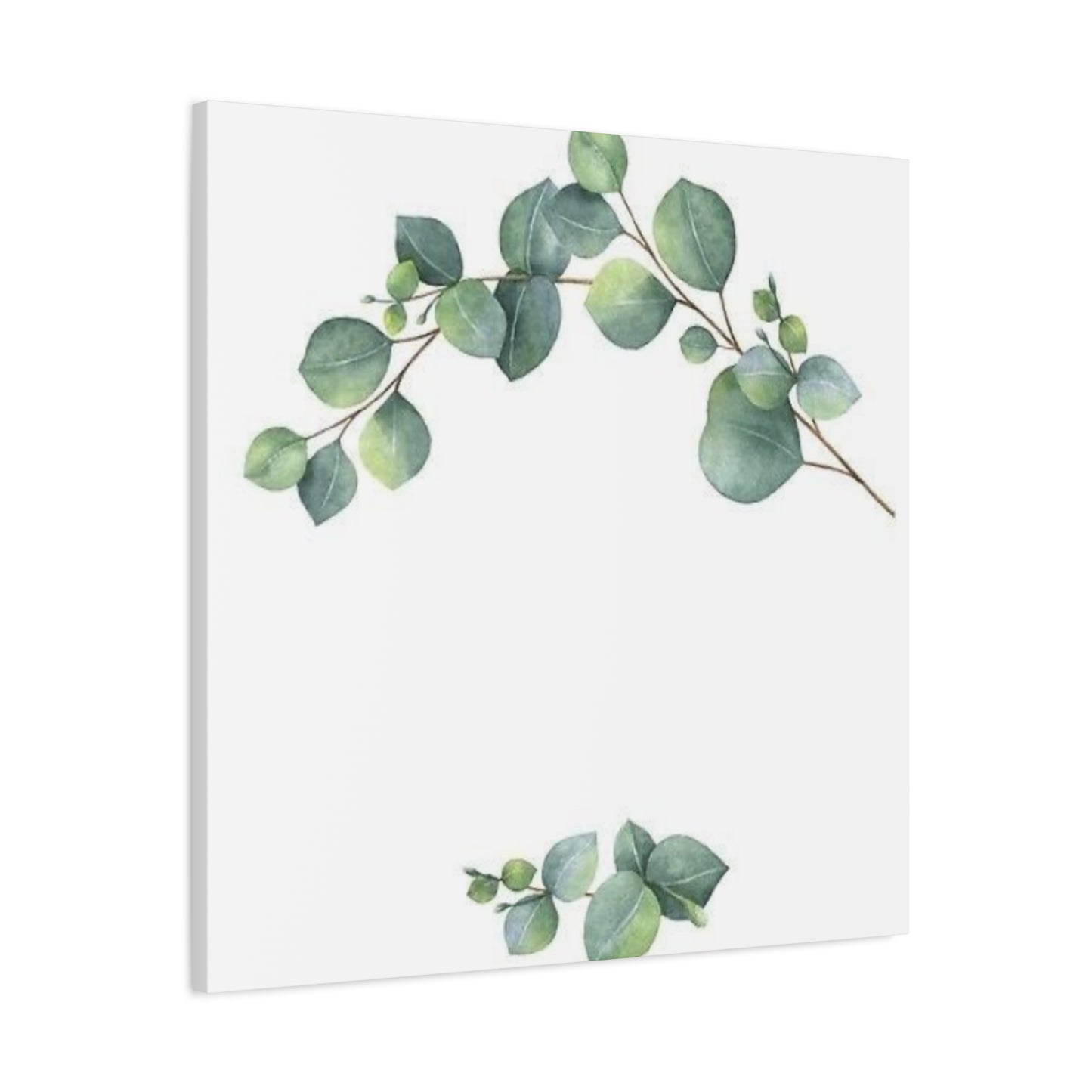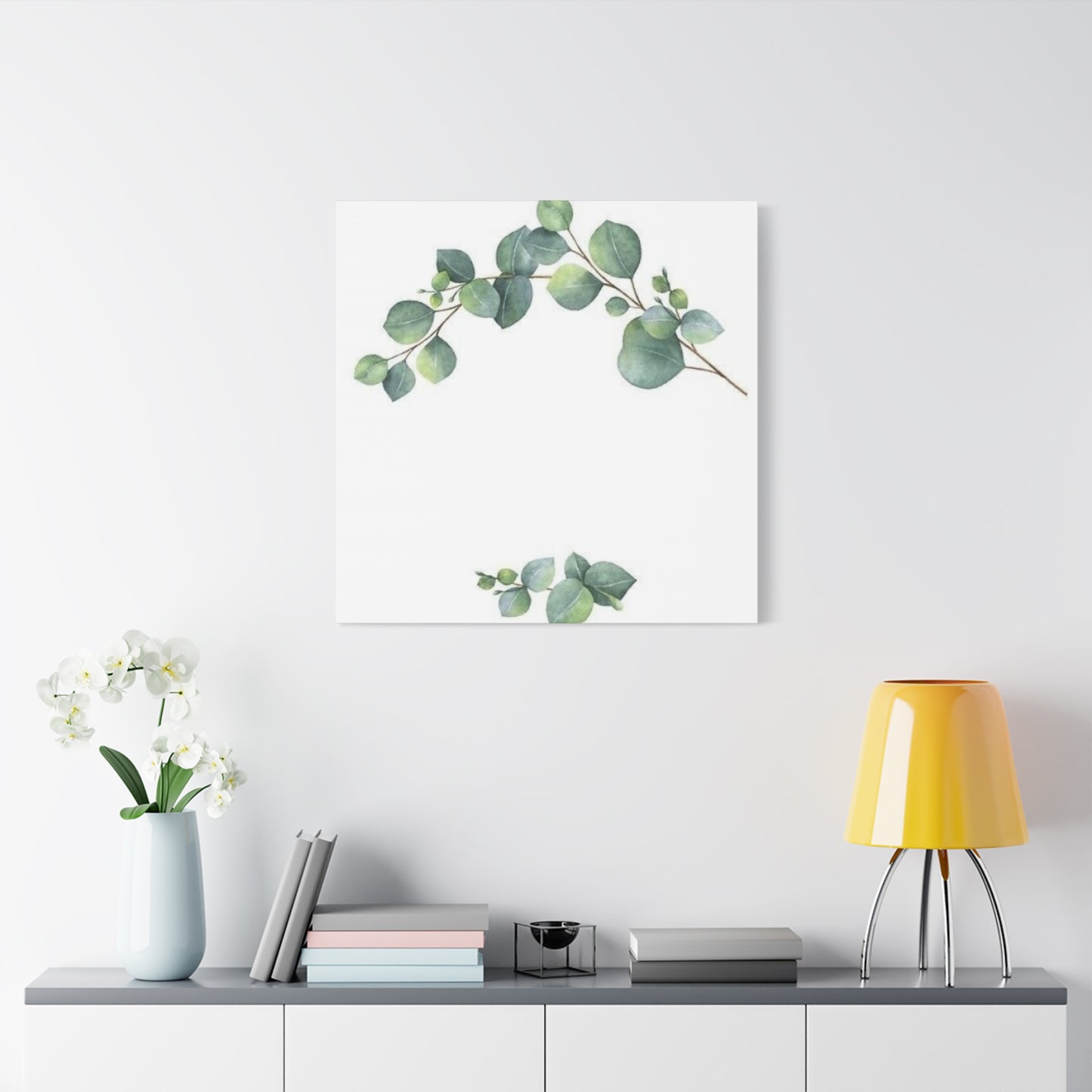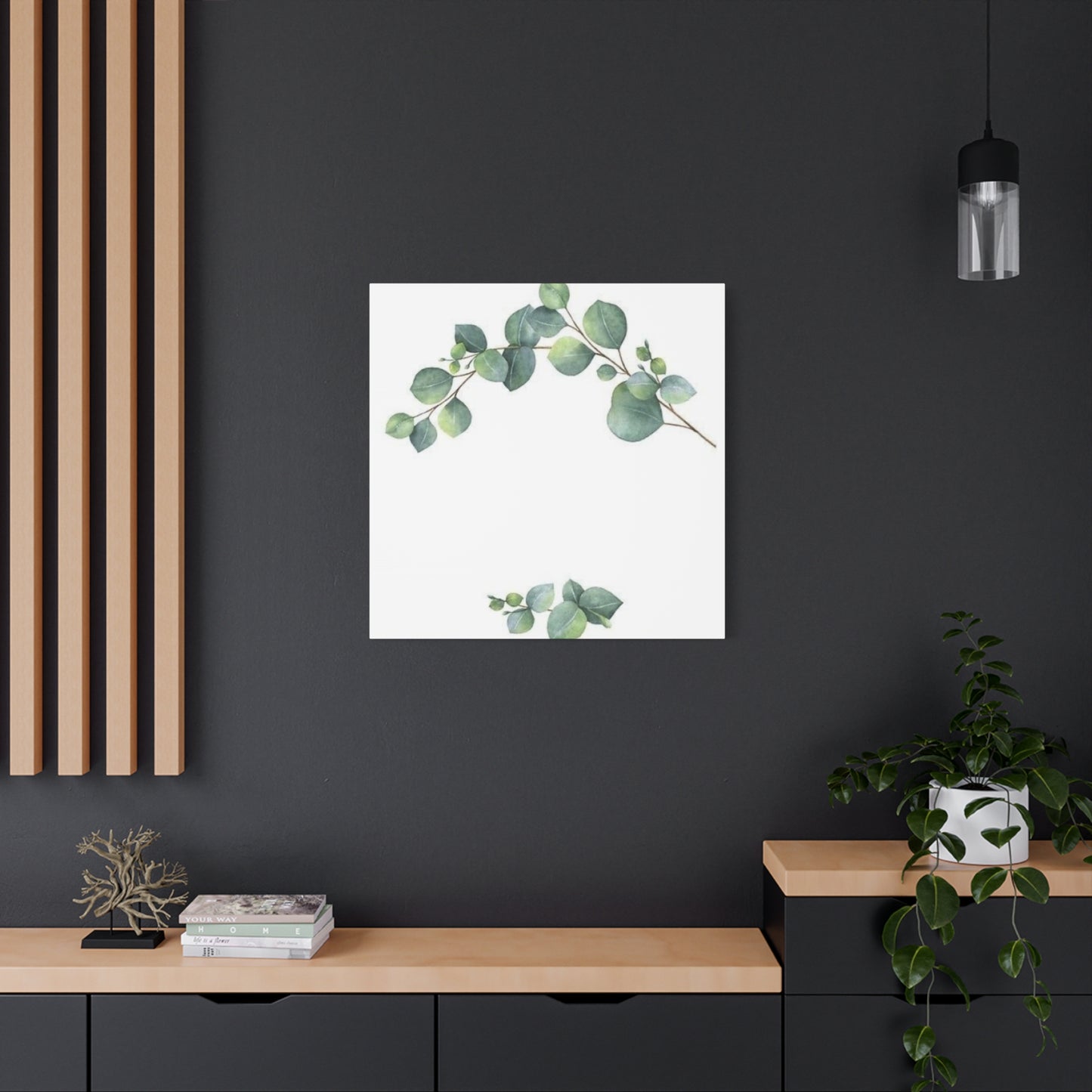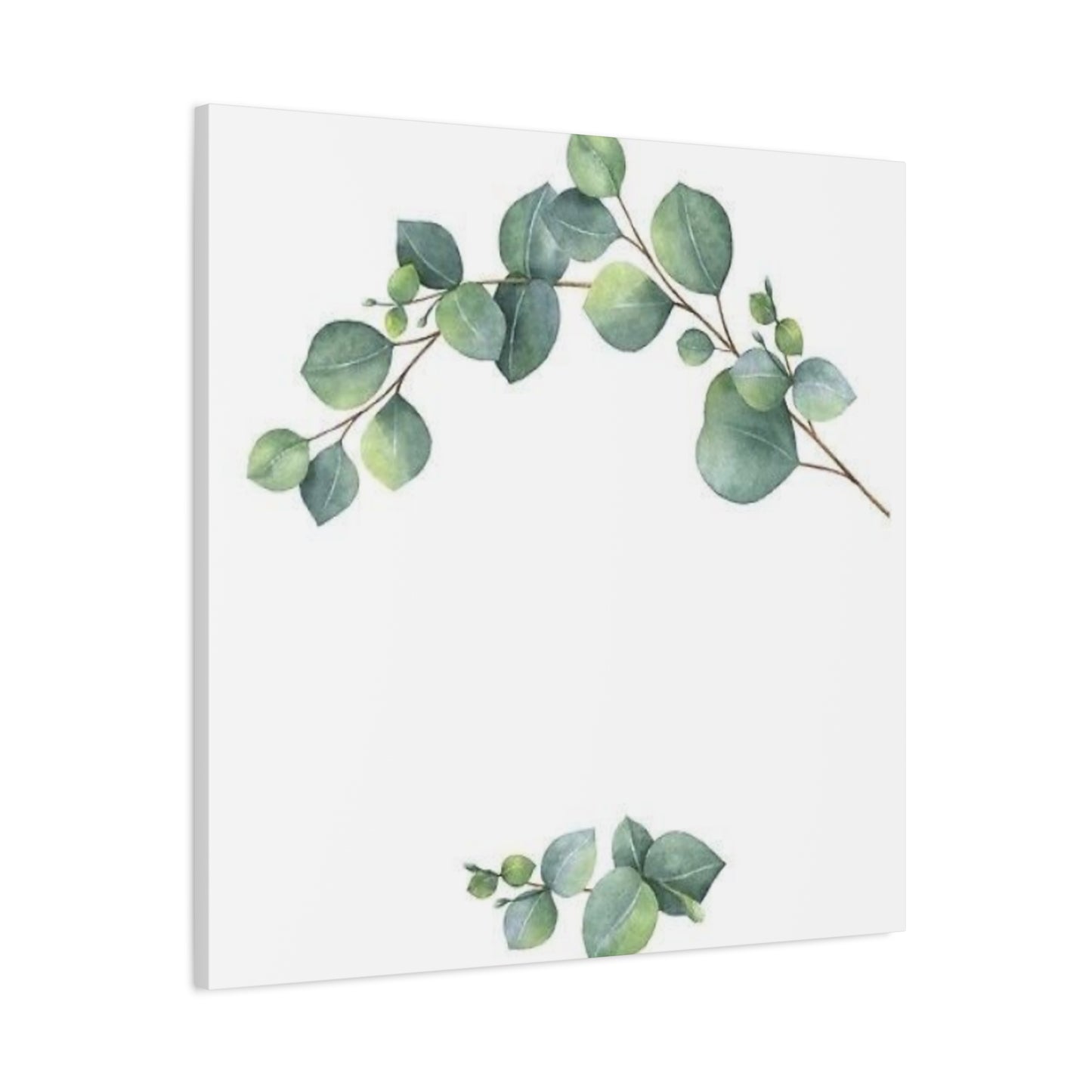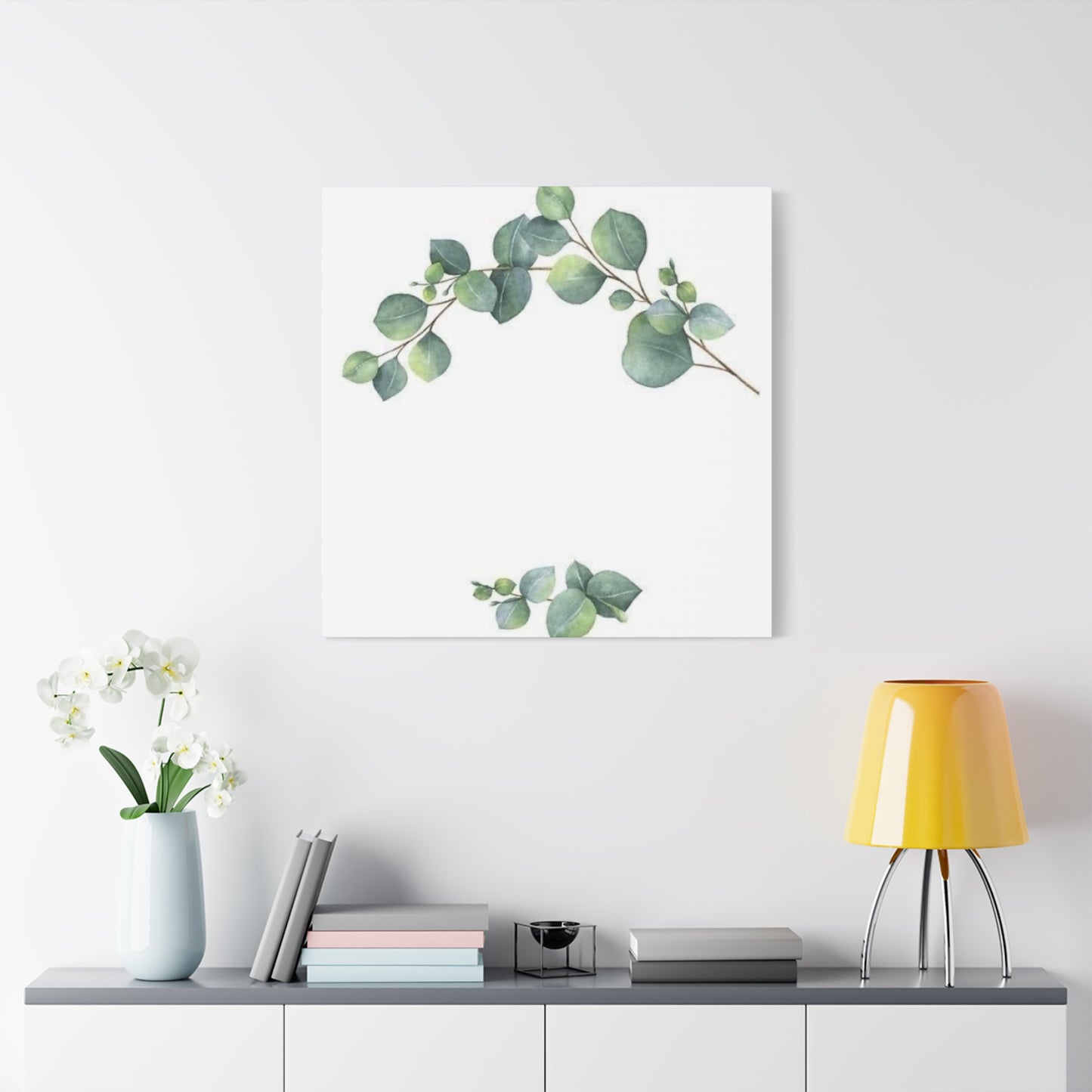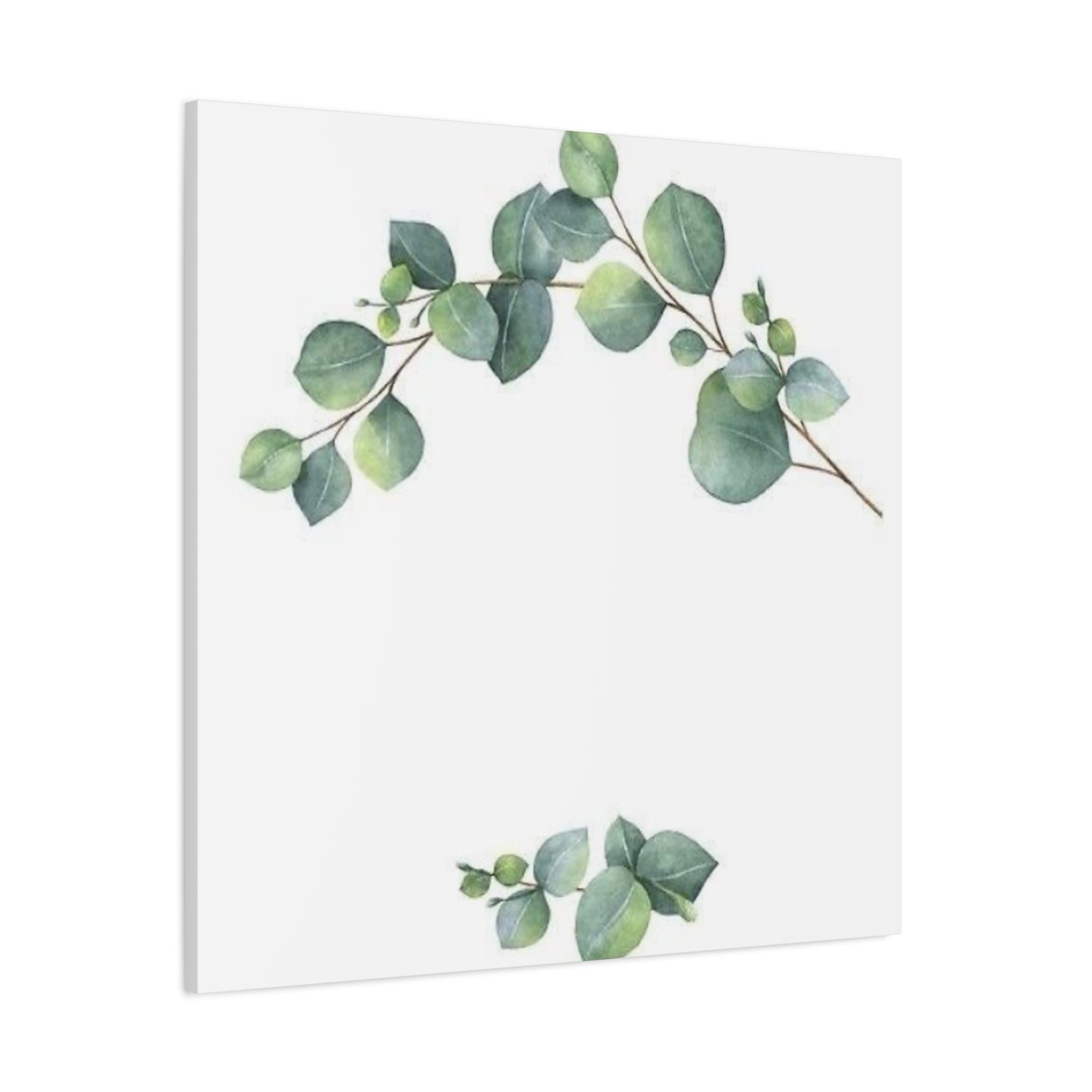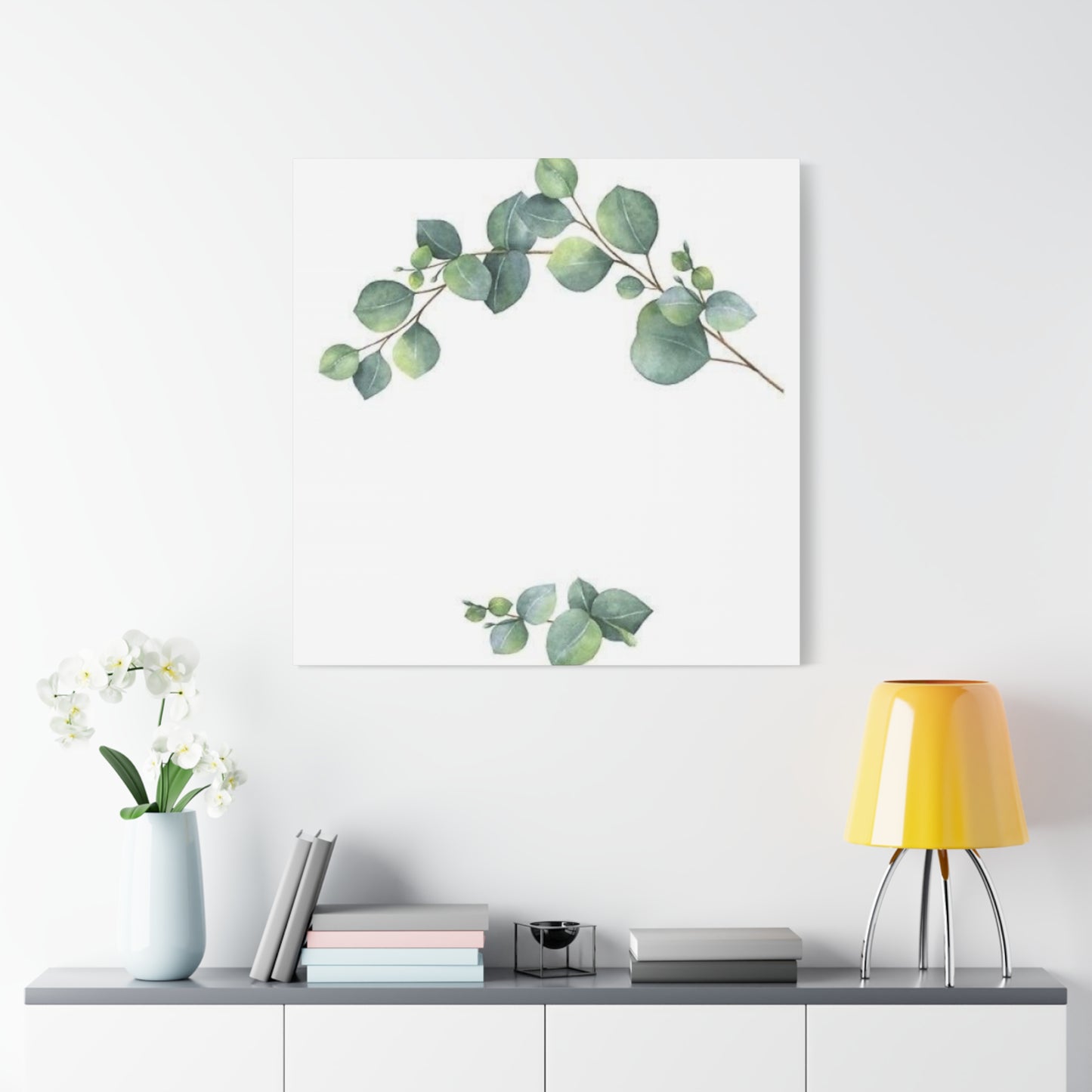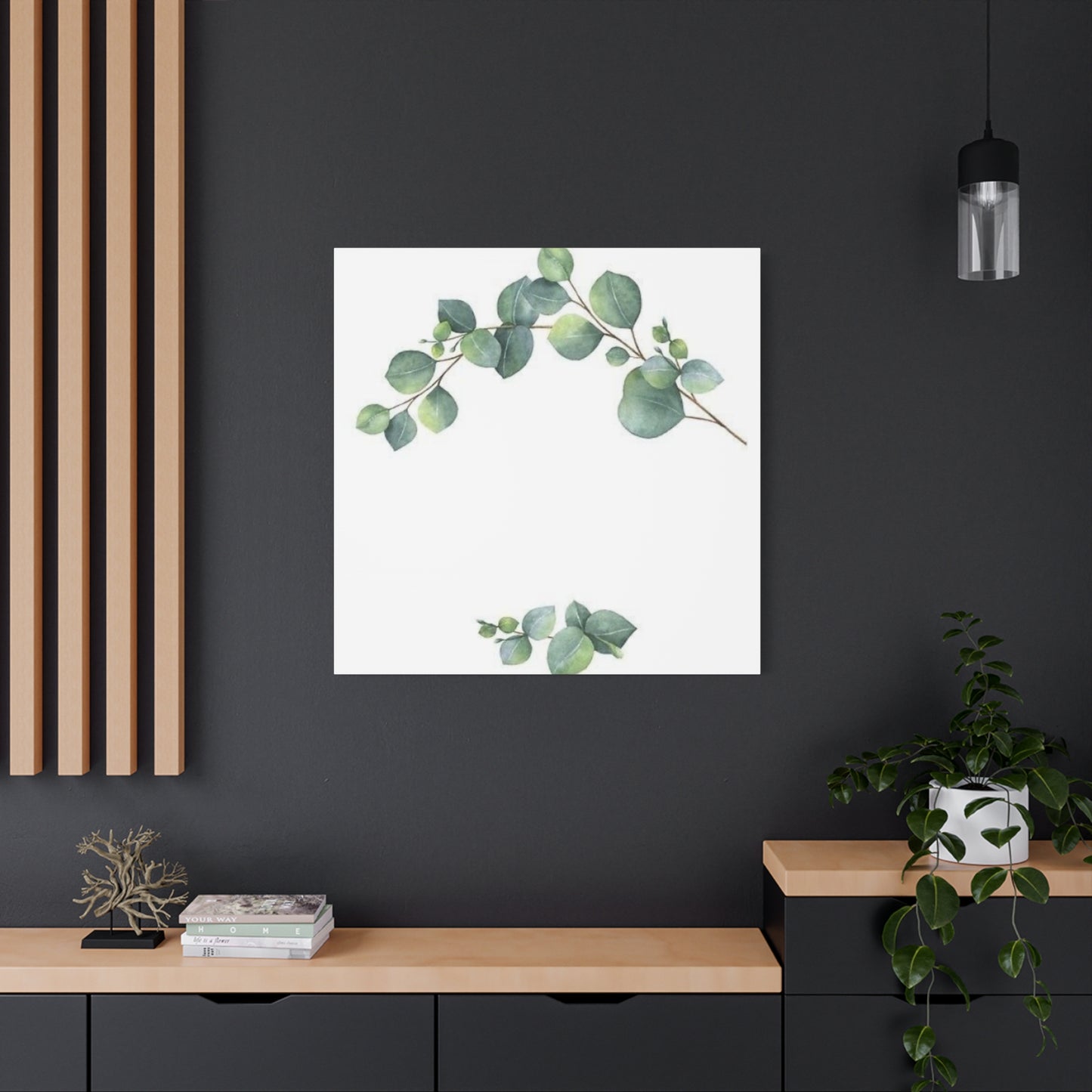Eucalyptus Plant Wall Art: Bringing Nature's Serenity Into Your Living Environment
The world of botanical décor has witnessed a remarkable surge in popularity, with eucalyptus plant wall art leading this natural revolution. These stunning botanical displays capture the essence of Australia's native flora while offering a sophisticated touch to contemporary homes. From fresh eucalyptus canvas prints to minimalist eucalyptus art, these decorative elements have become essential components for creating tranquil, nature-inspired environments.
Eucalyptus wall décor represents more than just aesthetic enhancement; it embodies a connection to nature that many homeowners crave in our increasingly urbanized world. The distinctive silvery-green foliage and graceful branches of eucalyptus plants translate beautifully into artistic representations, making them perfect subjects for various wall art formats. Whether displayed as botanical eucalyptus prints or incorporated into larger green eucalyptus wall decor schemes, these pieces bring an immediate sense of calm and organic beauty to any room.
The versatility of eucalyptus plant canvas art extends beyond traditional botanical illustrations. Contemporary artists and photographers have embraced the eucalyptus motif, creating everything from abstract interpretations to photorealistic representations. This diversity ensures that whether your aesthetic preferences lean toward minimalist eucalyptus art or more elaborate botanical displays, there's an eucalyptus wall art solution that will complement your existing décor while adding that coveted touch of natural elegance.
Fresh Eucalyptus Canvas Prints: Capturing Nature's Vitality
Fresh eucalyptus canvas prints represent the pinnacle of botanical wall art, combining high-quality printing techniques with the timeless appeal of eucalyptus imagery. These prints capture the delicate nuances of eucalyptus leaves, from their distinctive blue-green hues to the subtle variations in texture that make each branch unique. The printing process preserves the natural beauty of eucalyptus while ensuring longevity and color stability that will maintain its vibrancy for years to come.
The creation of fresh eucalyptus canvas prints involves sophisticated photography and printing techniques that reproduce the intricate details of eucalyptus foliage. Professional photographers often work with fresh eucalyptus branches, capturing them at their peak condition to ensure that every leaf, every curve, and every subtle color variation is preserved in the final print. This attention to detail results in artwork that appears almost three-dimensional, creating the illusion that fresh eucalyptus branches are growing directly from your wall.
Canvas as a medium offers unique advantages for eucalyptus prints. The texture of canvas complements the organic nature of eucalyptus imagery, adding depth and dimension that flat prints cannot achieve. The slight texture of canvas creates subtle shadows and highlights that enhance the natural appearance of eucalyptus leaves, making them appear more lifelike and engaging. Additionally, canvas prints offer superior durability compared to paper prints, making them ideal for long-term display in various environmental conditions.
When selecting fresh eucalyptus canvas prints, consider the lighting conditions in your intended display area. These prints often feature subtle color variations that can appear different under various lighting conditions. Natural daylight tends to enhance the blue-green tones characteristic of eucalyptus, while warm artificial lighting can emphasize the silver undertones. Understanding how your lighting will interact with the print ensures you select pieces that will look their best in your specific environment.
The framing options for fresh eucalyptus canvas prints are virtually limitless. While many canvas prints are designed to be hung unframed, creating a modern, gallery-wrapped appearance, adding a frame can provide additional visual weight and formality. Natural wood frames complement the organic nature of eucalyptus imagery, while sleek metal frames can create an interesting contrast that emphasizes the modern interpretation of this classical botanical subject.
Green Eucalyptus Wall Decor: Creating Harmonious Natural Environments
Green eucalyptus wall decor encompasses a broader category of decorative elements that incorporate eucalyptus motifs while emphasizing the plant's characteristic green coloration. This approach to decoration focuses on creating cohesive color schemes that promote tranquility and connection to nature. The various shades of green found in eucalyptus foliage, from deep forest greens to pale sage tones, provide an extensive palette for creating sophisticated decorative schemes.
The psychological impact of green eucalyptus wall decor cannot be overstated. Green is universally recognized as a calming color that promotes relaxation and reduces stress. When combined with the organic forms of eucalyptus foliage, this calming effect is amplified, creating environments that feel both sophisticated and restorative. Research in environmental psychology has consistently shown that exposure to natural imagery, particularly plant life, can reduce anxiety and improve overall well-being.
Creating effective green eucalyptus wall decor schemes requires careful consideration of color balance and visual flow. The key is to use eucalyptus green as an anchor color while incorporating complementary tones that enhance rather than compete with the natural beauty of the eucalyptus imagery. Neutral tones such as cream, beige, and soft gray work exceptionally well with eucalyptus green, creating backgrounds that allow the botanical elements to take center stage.
The placement of green eucalyptus wall decor within a room can significantly impact its effectiveness. Large statement pieces work well as focal points above sofas, beds, or dining tables, while smaller pieces can be grouped to create gallery walls that tell a cohesive botanical story. Consider the sight lines within your room and position eucalyptus wall decor where it will be easily visible and appreciated by both residents and guests.
Lighting plays a crucial role in maximizing the impact of green eucalyptus wall decor. Natural light enhances the fresh, vibrant qualities of eucalyptus green, while carefully positioned artificial lighting can create dramatic shadows and highlights that add depth and interest to the display. Track lighting, picture lights, or strategically placed table lamps can all be used to illuminate eucalyptus wall decor effectively.
The seasonal adaptability of green eucalyptus wall decor makes it an excellent long-term investment. Unlike seasonal decorations that may feel inappropriate at certain times of year, eucalyptus imagery remains relevant and appealing throughout all seasons. The evergreen nature of eucalyptus plants means that your wall decor will feel fresh and appropriate whether it's spring, summer, fall, or winter.
Minimalist Eucalyptus Art: Embracing Simplicity and Elegance
Minimalist eucalyptus art represents a refined approach to botanical decoration that emphasizes clean lines, simplified forms, and deliberate use of negative white space. This artistic philosophy removes unnecessary details while preserving the essential beauty of eucalyptus forms, creating pieces that feel both contemporary and timeless. The minimalist approach to eucalyptus art appeals to those who appreciate understated elegance and prefer décor that enhances rather than dominates their living environment.
The creation of minimalist eucalyptus art requires careful consideration of composition and balance. Artists working in this style must identify the most essential elements of eucalyptus imagery and eliminate anything that doesn't contribute to the overall impact of the piece. This process of reduction and refinement results in artwork that captures the essence of eucalyptus while maintaining a clean, uncluttered appearance that complements modern décor philosophies.
Color palettes in minimalist eucalyptus art tend to be deliberately limited, often featuring monochromatic or near-monochromatic schemes that emphasize form over chromatic complexity. Subtle variations in tone and value create interest and depth without introducing visual chaos. This restrained approach to color allows the natural beauty of eucalyptus forms to take precedence while ensuring that the artwork will coordinate easily with existing décor elements.
The use of negative space is particularly important in minimalist eucalyptus art. Rather than filling every inch of the canvas or print area, minimalist artists deliberately leave areas empty, allowing the eye to rest and the eucalyptus elements to breathe. This strategic use of empty space creates a sense of calm and spaciousness that enhances the meditative qualities of eucalyptus imagery.
Texture plays a subtle but important role in minimalist eucalyptus art. While the overall composition may be simplified, the textures within the eucalyptus elements themselves can provide visual interest and tactile appeal. Canvas textures, paper grains, or subtle printing techniques can all contribute to the overall sensory experience of the artwork without compromising its minimalist integrity.
The versatility of minimalist eucalyptus art makes it suitable for a wide range of decorative contexts. These pieces work equally well in modern, contemporary, Scandinavian, or transitional décor styles. The simplified nature of minimalist eucalyptus art means it won't clash with existing patterns or colors, making it an ideal choice for those who prefer decorative elements that integrate seamlessly with their existing aesthetic.
When displaying minimalist eucalyptus art, consider the principles of minimalist design in your arrangement as well. Avoid overcrowding the wall or surrounding area, and ensure that each piece has adequate space to be appreciated individually. The goal is to create a serene, uncluttered environment that reflects the same principles of simplicity and elegance embodied in the artwork itself.
Eucalyptus Plant Canvas: Durability Meets Natural Beauty
Eucalyptus plant canvas represents the marriage of artistic beauty with practical durability, offering long-lasting botanical artwork that can withstand the demands of daily life while maintaining its aesthetic appeal. Canvas as a medium has been favored by artists for centuries due to its ability to hold paint and ink effectively while providing a stable surface that resists warping and deterioration over time. When applied to eucalyptus plant imagery, canvas creates an ideal platform for showcasing the intricate details and subtle color variations that make eucalyptus so visually appealing.
The production process for eucalyptus plant canvas involves several crucial steps that ensure both visual quality and longevity. High-resolution photography or digital artwork is printed using archival-quality inks that resist fading, color shifting, and degradation over time. The canvas itself is typically made from cotton or linen fibers that provide an ideal surface texture while maintaining stability across varying environmental conditions. Professional-grade printers apply the imagery using techniques that ensure deep ink penetration and consistent color reproduction across the entire surface.
Gallery wrap construction is a popular option for eucalyptus plant canvas, where the image extends around the edges of the stretcher frame, eliminating the need for traditional matting and framing. This contemporary presentation style allows the eucalyptus imagery to appear to float on the wall, creating a modern, clean aesthetic that complements contemporary décor. The gallery wrap technique also ensures that no portion of the artwork is hidden by frame elements, allowing viewers to appreciate the complete composition.
The texture inherent in canvas adds a dimensional quality to eucalyptus plant artwork that flat prints cannot achieve. This texture interacts with light in subtle ways, creating micro-shadows and highlights that enhance the perceived depth and realism of the eucalyptus imagery. The organic texture of canvas complements the natural subject matter, creating a synergistic relationship between medium and message that enhances the overall impact of the piece.
Maintenance of eucalyptus plant canvas is relatively straightforward, requiring only periodic dusting with a soft, dry brush or cloth to remove accumulated particles. Unlike framed pieces with glass, canvas prints don't require glass cleaning or worry about glare and reflection issues. The durability of properly produced canvas prints means they can maintain their appearance for decades with minimal care, making them an excellent investment for long-term decoration.
The sizing options available for eucalyptus plant canvas are virtually unlimited, from small accent pieces suitable for powder rooms or hallways to large statement pieces designed to dominate entire walls. The scalability of digital printing means that eucalyptus imagery can be reproduced at any size without loss of quality, allowing you to select dimensions that perfectly suit your available wall area and decorative needs.
Custom eucalyptus plant canvas options allow for personalization that creates truly unique decorative elements. Whether you prefer specific eucalyptus varieties, particular color treatments, or custom sizing, many suppliers offer customization services that ensure your eucalyptus plant canvas perfectly matches your vision and décor requirements.
Botanical Eucalyptus Prints: Scientific Beauty Meets Artistic Expression
Botanical eucalyptus prints combine scientific accuracy with artistic sensibility, creating decorative pieces that educate while they beautify. This style of artwork has its roots in the botanical illustrations that were crucial for scientific documentation and education before the advent of photography. Contemporary botanical eucalyptus prints maintain this tradition of precise representation while incorporating modern artistic techniques and printing technologies that enhance their decorative appeal.
The creation of authentic botanical eucalyptus prints requires extensive knowledge of eucalyptus plant biology and morphology. Artists working in this field often collaborate with botanists and horticulturists to ensure that their representations accurately capture the distinctive characteristics of different eucalyptus species. This scientific foundation provides credibility and educational value that distinguishes true botanical prints from more general artistic interpretations of eucalyptus imagery.
Different eucalyptus species offer varied visual characteristics that provide rich source material for botanical prints. From the round, blue-gray leaves of Eucalyptus cinerea to the elongated, pointed leaves of Eucalyptus globulus, each species presents unique forms, colors, and growth patterns that can be highlighted in botanical artwork. This diversity allows for the creation of comprehensive botanical print collections that showcase the remarkable variety within the eucalyptus genus.
The labeling and notation common in botanical eucalyptus prints add an additional layer of interest and educational value. Scientific names, morphological details, and growth characteristics may be included alongside the artistic representation, creating pieces that function as both decoration and reference material. This dual purpose appeals particularly to gardening enthusiasts, nature lovers, and those who appreciate the intersection of art and science.
Color accuracy is paramount in botanical eucalyptus prints, requiring careful attention to the reproduction of the subtle color variations that characterize different eucalyptus species and growth stages. Professional color management systems ensure that printed colors match the original specimens as closely as possible, preserving the educational and scientific value of the artwork while maintaining its aesthetic appeal.
The paper selection for botanical eucalyptus prints significantly impacts their appearance and longevity. High-quality, acid-free papers resist yellowing and deterioration, ensuring that the prints maintain their scientific accuracy and visual appeal over time. Textured papers can add visual interest and complement the natural subject matter, while smooth papers provide crisp detail reproduction that showcases the precision of botanical illustration.
Framing considerations for botanical eucalyptus prints should reflect their scientific heritage while providing appropriate protection. Museum-quality matting and UV-protective glazing help preserve the prints while allowing for clear viewing of fine details. Traditional framing styles that reflect the historical context of botanical illustration can enhance the educational and scientific character of these prints.
Calming Eucalyptus Wall Art: Creating Therapeutic Environments
Calming eucalyptus wall art specifically focuses on the therapeutic and relaxation benefits that eucalyptus imagery can provide in residential and commercial environments. The visual qualities of eucalyptus that make it effective for promoting calm include its soft, muted color palette, organic flowing forms, and association with natural environments. When properly executed, calming eucalyptus wall art can significantly impact the mood and stress levels of those who view it regularly.
The psychology of color plays a crucial role in the effectiveness of calming eucalyptus wall art. The blue-green tones characteristic of eucalyptus foliage are scientifically proven to reduce stress and promote relaxation. These colors are associated with nature, water, and sky, triggering unconscious responses that help lower heart rate and reduce anxiety. The subtle variations in eucalyptus coloration prevent the monotony that can occur with solid color fields while maintaining the calming effect.
Composition techniques in calming eucalyptus wall art emphasize flowing, organic lines that guide the eye gently across the artwork rather than creating jarring focal points or abrupt transitions. Soft gradations, gentle curves, and natural asymmetry all contribute to the peaceful quality that makes eucalyptus wall art effective for relaxation purposes. These compositional elements mirror the patterns found in nature, which humans find inherently soothing.
The scale and placement of calming eucalyptus wall art should be considered carefully to maximize its therapeutic benefits. Pieces positioned at eye level create the most immediate impact, while larger pieces can create an immersive experience that transports viewers mentally to peaceful natural environments. Bedroom installations should be positioned where they can be easily viewed from the bed, while living room installations should consider primary seating arrangements and traffic flow.
Healthcare environments have increasingly recognized the benefits of calming eucalyptus wall art for patient well-being and stress reduction. Medical facilities, dental offices, and therapy practices often incorporate eucalyptus imagery to create more welcoming, less clinical environments. The natural associations of eucalyptus with healing and aromatherapy make it particularly appropriate for healthcare applications.
Workplace installations of calming eucalyptus wall art can help reduce employee stress and improve job satisfaction. Open office environments, conference rooms, and break areas all benefit from the presence of natural imagery that provides visual relief from technology and artificial environments. The productivity benefits of reduced workplace stress make eucalyptus wall art a valuable investment for forward-thinking employers.
The lighting used to illuminate calming eucalyptus wall art should enhance rather than detract from its peaceful qualities. Harsh fluorescent lighting can negate the calming effects of the artwork, while warm, diffused lighting enhances the natural colors and creates a more inviting atmosphere. Adjustable lighting systems allow for customization based on time of day and desired mood.
Maintenance of calming eucalyptus wall art should be minimal and non-disruptive to preserve the peaceful environment it helps create. Regular dusting and occasional professional cleaning maintain the appearance of the artwork without requiring frequent handling or repositioning that might disturb the established aesthetic balance.
Natural Green Eucalyptus Art: Authentic Botanical Representation
Natural green eucalyptus art emphasizes authentic color representation and realistic portrayal of eucalyptus plants as they appear in their native environments. This approach prioritizes accuracy over artistic interpretation, creating artwork that serves as both decoration and documentation of natural beauty. The goal is to bring the authentic experience of encountering eucalyptus in nature into indoor environments through faithful artistic reproduction.
The color palette of natural green eucalyptus art reflects the true range of greens found in living eucalyptus plants, from the deep forest green of mature leaves to the pale sage green of new growth. Seasonal variations, lighting conditions, and plant health all influence the natural colors of eucalyptus, and authentic artwork captures these subtle but important variations. This attention to natural color accuracy creates artwork that feels genuinely connected to the living plant world.
Photographic techniques used in creating natural green eucalyptus art often involve field work in eucalyptus groves or botanical gardens where the plants can be captured in optimal lighting conditions. Natural sunlight brings out the full range of colors and textures in eucalyptus foliage, while avoiding the color distortions that can occur with artificial lighting. Professional nature photographers understand the importance of timing, often shooting during the golden hours when natural light enhances rather than washes out the subtle color variations.
Digital enhancement in natural green eucalyptus art should be minimal and focused on reproduction accuracy rather than artistic interpretation. While some adjustment may be necessary to compensate for printing limitations or viewing conditions, the goal is to maintain the authentic appearance of the eucalyptus as it would be seen in nature. Over-saturation or artificial color manipulation undermines the natural authenticity that is the hallmark of this artistic approach.
The educational value of natural green eucalyptus art makes it particularly suitable for nature centers, schools, botanical institutions, and homes where environmental awareness is valued. By presenting eucalyptus in its authentic form, this artwork can help viewers develop better understanding and appreciation for natural plant life. Children particularly benefit from exposure to accurate natural imagery that helps them recognize and understand the natural world.
Different eucalyptus species exhibit distinct natural green color variations that can be highlighted in species-specific artwork. Eucalyptus pauciflora displays silvery-green tones, while Eucalyptus nitens shows deeper green coloration. Creating collections that showcase these species-specific color differences provides educational value while creating visually interesting groupings that maintain botanical accuracy.
The preservation of natural green eucalyptus art requires careful attention to color stability over time. UV-resistant inks and protective glazing help maintain the authentic colors that make this artwork valuable for both decoration and education. Regular monitoring for color changes ensures that the artwork continues to provide accurate representation of natural eucalyptus colors.
Environmental certification of materials used in natural green eucalyptus art reflects the environmental consciousness that often motivates both artists and purchasers in this category. Sustainable printing practices, recycled materials, and environmentally responsible sourcing align with the natural themes of the artwork while supporting conservation efforts that protect actual eucalyptus habitats.
Eucalyptus Plant Decor: Comprehensive Decorative Solutions
Eucalyptus plant decor encompasses a holistic approach to incorporating eucalyptus themes throughout living and working environments. This comprehensive decorative philosophy extends beyond individual wall art pieces to include complementary elements that create cohesive, nature-inspired environments. The goal is to integrate eucalyptus motifs seamlessly into existing décor while creating new focal points that enhance the overall aesthetic appeal of the area.
The versatility of eucalyptus plant decor allows for implementation across various decorative styles and preferences. Contemporary environments benefit from clean, simplified eucalyptus imagery that complements modern furnishings and architectural elements. Traditional settings can accommodate more detailed, classical botanical representations that harmonize with established decorative themes. The key is selecting eucalyptus decor elements that enhance rather than conflict with existing aesthetic choices.
Color coordination in eucalyptus plant decor requires careful consideration of existing room colors and desired atmospheric effects. The natural green tones of eucalyptus work harmoniously with earth tones, neutrals, and water-inspired blues, while providing pleasing contrast against warmer colors like terracotta, coral, and gold. Understanding color relationships ensures that eucalyptus plant decor enhances the overall room aesthetic rather than creating visual discord.
Scale relationships between different eucalyptus decor elements prevent visual confusion and create pleasing proportional balance. Large statement pieces require adequate wall area and complementary furnishing scale, while smaller accent pieces can be grouped or distributed throughout the area to create visual rhythm. The principle of odd numbers often applies when grouping eucalyptus decor pieces, with arrangements of three or five pieces typically creating more dynamic and pleasing compositions.
Seasonal adaptability of eucalyptus plant decor makes it a practical long-term decorative investment. Unlike seasonal themes that may feel inappropriate at certain times of year, eucalyptus imagery remains relevant and appealing throughout all seasons. The evergreen nature of eucalyptus plants means your decor will feel fresh and appropriate whether it's spring growth season or winter dormancy.
The integration of eucalyptus plant decor with other natural elements creates layered, sophisticated environments that feel connected to the natural world. Complementary elements might include natural wood furnishings, stone accents, organic textiles, and other botanical imagery. The goal is to create environments that feel naturally evolved rather than artificially imposed, with eucalyptus elements serving as integral components of a larger natural theme.
Maintenance considerations for comprehensive eucalyptus plant decor should be planned from the outset to ensure long-term satisfaction with the decorative investment. Different materials and display methods require varying levels of care, from simple dusting to periodic professional cleaning. Planning for maintenance needs ensures that the eucalyptus decor will continue to enhance the environment for years to come.
Lighting design for eucalyptus plant decor should consider both functional and aesthetic needs while enhancing the natural beauty of the botanical elements. Natural light enhances the fresh, vital appearance of eucalyptus imagery, while artificial lighting can create dramatic effects and ensure visibility during evening hours. The interplay between light and eucalyptus imagery can significantly impact the overall success of the decorative scheme.
Soft Green Canvas Prints: Subtle Elegance in Natural Tones
Soft green canvas prints represent a refined approach to eucalyptus wall art that emphasizes gentle, muted tones and subtle color gradations. These prints appeal to those who appreciate understated elegance and prefer decorative elements that create calm, serene environments without overwhelming the existing décor. The soft green palette associated with eucalyptus provides an ideal foundation for creating sophisticated, nature-inspired decorative schemes.
The color psychology of soft green tones promotes relaxation, reduces eye strain, and creates feelings of balance and harmony. Research in color therapy has consistently shown that gentle green tones can lower blood pressure, reduce anxiety, and improve overall sense of well-being. When applied to eucalyptus imagery, these beneficial effects are enhanced by the natural associations that eucalyptus brings to mind, including fresh air, natural healing, and peaceful forest environments.
The printing techniques used for soft green canvas prints require careful attention to color reproduction and tonal subtlety. Advanced printing systems with expanded color gamuts can reproduce the delicate variations in soft green tones that give eucalyptus imagery its distinctive character. The goal is to maintain the gentle, soothing quality of soft greens while ensuring that the printed result accurately reflects the artist's vision and the natural beauty of the eucalyptus subject.
Canvas texture plays a particularly important role in soft green eucalyptus prints, as the subtle color variations can be enhanced or diminished by the surface characteristics of the printing medium. Fine-weave canvases preserve detail and allow for smooth color gradations, while coarser weaves add texture that can complement the organic nature of eucalyptus imagery. The choice of canvas texture should align with the overall aesthetic goals of the piece and the environment where it will be displayed.
The framing and presentation options for soft green canvas prints should complement the gentle, understated nature of the artwork. Gallery wrap presentation creates a modern, clean appearance that allows the soft colors to take center stage without competing frame elements. When framing is desired, natural wood tones or soft metallic finishes work well with soft green color schemes, while stark black or white frames may create too much contrast for the gentle aesthetic these prints are designed to achieve.
Lighting considerations for soft green canvas prints require particular attention to color temperature and intensity. Cool lighting can enhance the fresh, natural quality of soft greens, while warm lighting may shift the color perception toward yellow undertones. Adjustable lighting systems allow for customization based on time of day and desired mood, ensuring that the soft green eucalyptus prints always appear at their best.
The versatility of soft green canvas prints makes them suitable for a wide range of decorative applications, from bedrooms and nurseries where calm is essential to living areas and offices where subtle beauty enhances the environment without distraction. The gentle nature of soft green eucalyptus prints means they work well with various decorative styles, from traditional to contemporary, serving as unifying elements that tie together diverse decorative components.
Grouping strategies for soft green canvas prints should consider the cumulative effect of multiple pieces while maintaining the individual integrity of each print. Tonal variations between pieces can create visual interest while maintaining overall harmony. The spacing between grouped prints affects the visual impact, with closer spacing creating more unified compositions and wider spacing allowing each piece to be appreciated individually.
Eucalyptus Leaves Wall Art: Detailed Natural Forms
Eucalyptus leaves wall art focuses specifically on the distinctive foliage characteristics that make eucalyptus plants visually compelling and botanically interesting. This specialized approach emphasizes the unique shapes, textures, and growth patterns of eucalyptus leaves, creating artwork that celebrates the intricate details of natural design. The resulting pieces often reveal aspects of eucalyptus beauty that casual observation might miss, making them both decorative and educational.
The morphological diversity of eucalyptus leaves provides rich source material for detailed wall art. Juvenile eucalyptus leaves often differ dramatically from mature leaves on the same plant, with rounded, opposite juvenile leaves giving way to elongated, alternate adult leaves. This transformation offers artists opportunities to show growth stages, seasonal changes, and the complex life cycle of eucalyptus plants within single compositions or series of related pieces.
The vein patterns visible in eucalyptus leaves create intricate natural geometries that translate beautifully into wall art. The parallel venation common in eucalyptus species creates linear patterns that can be emphasized through lighting, printing techniques, or artistic interpretation. These natural patterns provide visual interest while maintaining the organic, flowing character that makes eucalyptus imagery so appealing for decorative purposes.
Surface textures of eucalyptus leaves vary significantly between species and can be highlighted through appropriate artistic techniques. The waxy coating that gives many eucalyptus leaves their distinctive blue-green color creates subtle light reflections that skilled photographers and artists can capture and enhance. Textural details add visual depth and tactile appeal that engages viewers on multiple sensory levels.
The arrangement patterns of eucalyptus leaves on branches follow natural growth principles that create pleasing compositional structures. The spiral arrangement common in many eucalyptus species creates dynamic visual flow that guides the eye around the artwork while maintaining organic naturalness. Understanding these natural growth patterns helps artists create compositions that feel authentic and botanically accurate.
Color variations in eucalyptus leaves extend far beyond simple green tones, encompassing blues, grays, silvers, and even purples depending on species, age, and growing conditions. Capturing and reproducing these subtle color variations requires sophisticated color management and printing techniques that preserve the natural complexity while ensuring long-term color stability. The resulting artwork reveals the true color richness of eucalyptus foliage that casual observers often overlook.
The lighting requirements for eucalyptus leaves wall art should emphasize the textural and color details that make these pieces special. Directional lighting can highlight surface textures and create dramatic shadows that reveal the three-dimensional structure of leaves. The angle and intensity of lighting affect how viewers perceive the artwork, making lighting design an integral part of the overall presentation strategy.
Conservation considerations for eucalyptus leaves wall art include protection from UV damage that can fade colors and degrade materials over time. Museum-quality glazing and archival materials help preserve the intricate details that make these pieces valuable while allowing clear viewing of fine textural elements. Proper conservation ensures that the educational and aesthetic value of eucalyptus leaves wall art will be maintained for future generations.
Simple Eucalyptus Canvas: Embracing Uncomplicated Beauty
Simple eucalyptus canvas represents an artistic philosophy that finds beauty in restraint and celebrates the inherent elegance of eucalyptus forms without unnecessary embellishment. This approach appeals to those who appreciate clean, uncluttered aesthetics and prefer decorative elements that enhance their environment through subtle beauty rather than bold statement-making. The resulting artwork achieves maximum impact through careful selection and presentation of essential elements.
The composition principles underlying simple eucalyptus canvas focus on balance, proportion, and the strategic use of negative space. Rather than filling every inch of the canvas with imagery, artists working in this style carefully select the most compelling eucalyptus forms and present them against clean, uncluttered backgrounds that allow the natural beauty to speak for itself. This restrained approach often produces more powerful visual impact than busy, detailed compositions.
Color palettes in simple eucalyptus canvas tend toward monochromatic or limited color schemes that emphasize the natural beauty of eucalyptus without distraction from competing hues. Subtle variations in tone and value provide visual interest while maintaining the clean, uncomplicated appearance that defines this artistic approach. The restricted color palette ensures easy integration with existing décor while providing timeless appeal that won't become dated.
The selection of eucalyptus forms for simple canvas presentations requires careful consideration of shape, line, and visual impact. Single branches, individual leaves, or small groupings are often more effective than complex arrangements that might compromise the clean aesthetic. The goal is to capture the essence of eucalyptus beauty through careful editing rather than comprehensive representation, highlighting what makes eucalyptus distinctive without visual clutter.
Printing techniques for simple eucalyptus canvas should emphasize clarity, sharpness, and color accuracy while maintaining the clean, unadorned appearance that characterizes this style. High-quality printing systems ensure that simple compositions retain their impact through crisp details and accurate color reproduction. The technical quality of the printing becomes more important when compositions are simplified, as there are fewer elements to mask potential deficiencies.
The presentation formats for simple eucalyptus canvas often favor clean, modern approaches that complement the understated nature of the artwork. Gallery wrap presentations eliminate the need for frames while creating a contemporary appearance that allows the simple eucalyptus imagery to take center stage. When framing is desired, minimal frames that don't compete with the artwork maintain the clean aesthetic while providing additional structure and formality.
The versatility of simple eucalyptus canvas makes it suitable for a wide range of decorative applications where understated elegance is desired. These pieces work particularly well in modern, minimalist, or Scandinavian-inspired interiors where clean lines and uncluttered appearance are valued. The simplicity of the artwork ensures that it won't overwhelm smaller areas while providing sufficient visual interest for larger wall arrangements.
Maintenance requirements for simple eucalyptus canvas are typically minimal due to the uncomplicated nature of the artwork and presentation format. Regular dusting and protection from direct sunlight help preserve the appearance and color stability of the prints. The simple compositions are less likely to show wear or damage compared to more complex artwork, making them practical choices for high-traffic areas or commercial installations.
Eucalyptus Plant Prints: Versatile Botanical Artwork
Eucalyptus plant prints encompass a broad category of botanical artwork that captures various aspects of eucalyptus plants through different artistic mediums and techniques. This versatile art form includes everything from scientific botanical illustrations to abstract interpretations, providing options that suit diverse aesthetic preferences and decorative needs. The flexibility of print-based artwork makes eucalyptus plant prints accessible to a wide range of collectors and decorators.
The production methods for eucalyptus plant prints vary significantly depending on the artistic approach and intended use of the final product. High-resolution digital photography captures realistic representations of living eucalyptus plants, while hand-drawn illustrations offer artistic interpretation and stylistic flexibility. Watercolor techniques create soft, organic appearances that complement the natural subject matter, while pen-and-ink drawings emphasize structural details and botanical accuracy.
The paper selection for eucalyptus plant prints significantly impacts their appearance, longevity, and suitability for different display environments. Archival-quality papers resist aging and color changes while providing stable surfaces for various printing techniques. Textured papers add visual interest and complement organic subject matter, while smooth papers provide crisp detail reproduction. The weight and finish of the paper affect how the prints handle framing and display requirements.
Color reproduction in eucalyptus plant prints requires careful attention to accuracy and stability over time. Professional color management systems ensure that printed colors match the original artwork or photography while compensating for differences between various printing technologies and paper types. UV-resistant inks help maintain color integrity when prints are exposed to natural or artificial lighting over extended periods.
The sizing options available for eucalyptus plant prints range from small accent pieces suitable for intimate areas to large statement prints designed to dominate entire walls. Digital printing technologies allow for custom sizing that matches specific decorative requirements without loss of image quality. The scalability of print-based artwork makes it practical for both residential and commercial applications where precise size requirements must be met.
Framing considerations for eucalyptus plant prints should balance protection requirements with aesthetic preferences while considering the viewing environment and intended lifespan of the display. Museum-quality matting and glazing provide maximum protection for valuable or sentimental prints, while simple frames may be adequate for prints intended as temporary decorative elements. The framing style should complement both the artwork and the surrounding décor.
The collectibility of eucalyptus plant prints makes them attractive to both casual decorators and serious botanical art collectors. Limited edition prints, artist signatures, and certificates of authenticity add value and exclusivity while ensuring long-term investment potential. Series of related prints allow collectors to build comprehensive botanical collections focused on eucalyptus themes while providing decorative flexibility for various display arrangements.
Display strategies for eucalyptus plant prints should consider lighting, viewing angles, and protection from environmental damage while maximizing visual impact. Gallery lighting enhances details and colors while UV-filtering glazing protects against fading. The height and spacing of prints affect viewer engagement and should be adjusted based on the primary viewing context and traffic patterns in the display area.
Conclusion
Eucalyptus plant wall art offers a beautiful and meaningful way to bring the calming essence of nature into your living environment. Known for its soothing green tones and symbolic ties to healing and tranquility, eucalyptus-inspired artwork transforms ordinary walls into serene focal points that promote peace and balance. Whether displayed in the living room, bedroom, bathroom, or even a workspace, eucalyptus wall art adds a refreshing touch of botanical beauty that effortlessly enhances the overall mood of your space.
In a world where our daily lives are often fast-paced and digitally driven, the presence of natural imagery can serve as a grounding force. Eucalyptus art helps create an atmosphere that encourages mindfulness, relaxation, and wellness. Its subtle elegance and simplicity make it a perfect fit for a variety of interior design styles—from modern minimalist to boho chic and rustic farmhouse. The soft greens and neutral palettes blend harmoniously with most color schemes, allowing the art to uplift the space without overwhelming it.
Beyond aesthetics, eucalyptus wall art also symbolizes renewal and growth. Its presence can act as a daily visual reminder to breathe, slow down, and reconnect with yourself. Whether presented as a watercolor print, abstract canvas, or delicate line drawing, each interpretation of the eucalyptus plant brings its own energy—making it easy to choose a piece that resonates with your personal style and emotional needs.
High-quality canvas or framed eucalyptus prints also offer durability and long-lasting charm. These pieces are more than just decorative—they're investments in creating a peaceful home sanctuary. When paired with natural materials, cozy textures, and soft lighting, eucalyptus wall art becomes a key element in designing a space that nurtures both body and mind.
In conclusion, eucalyptus plant wall art is more than just a visual addition—it’s a thoughtful and serene expression of nature’s calming influence. By incorporating it into your living environment, you invite peace, simplicity, and renewal into your everyday life, creating a space where you can truly feel at ease.

















